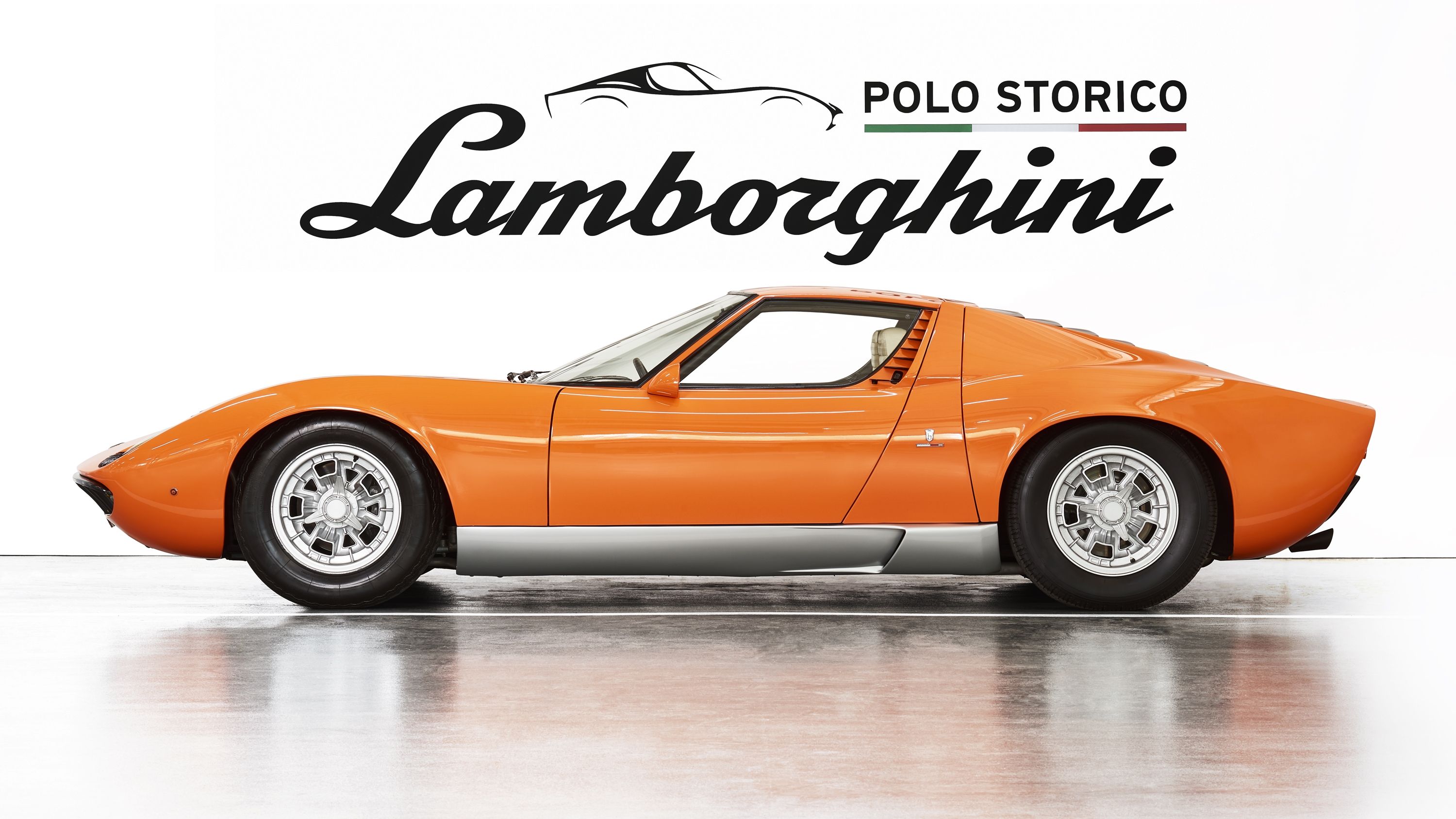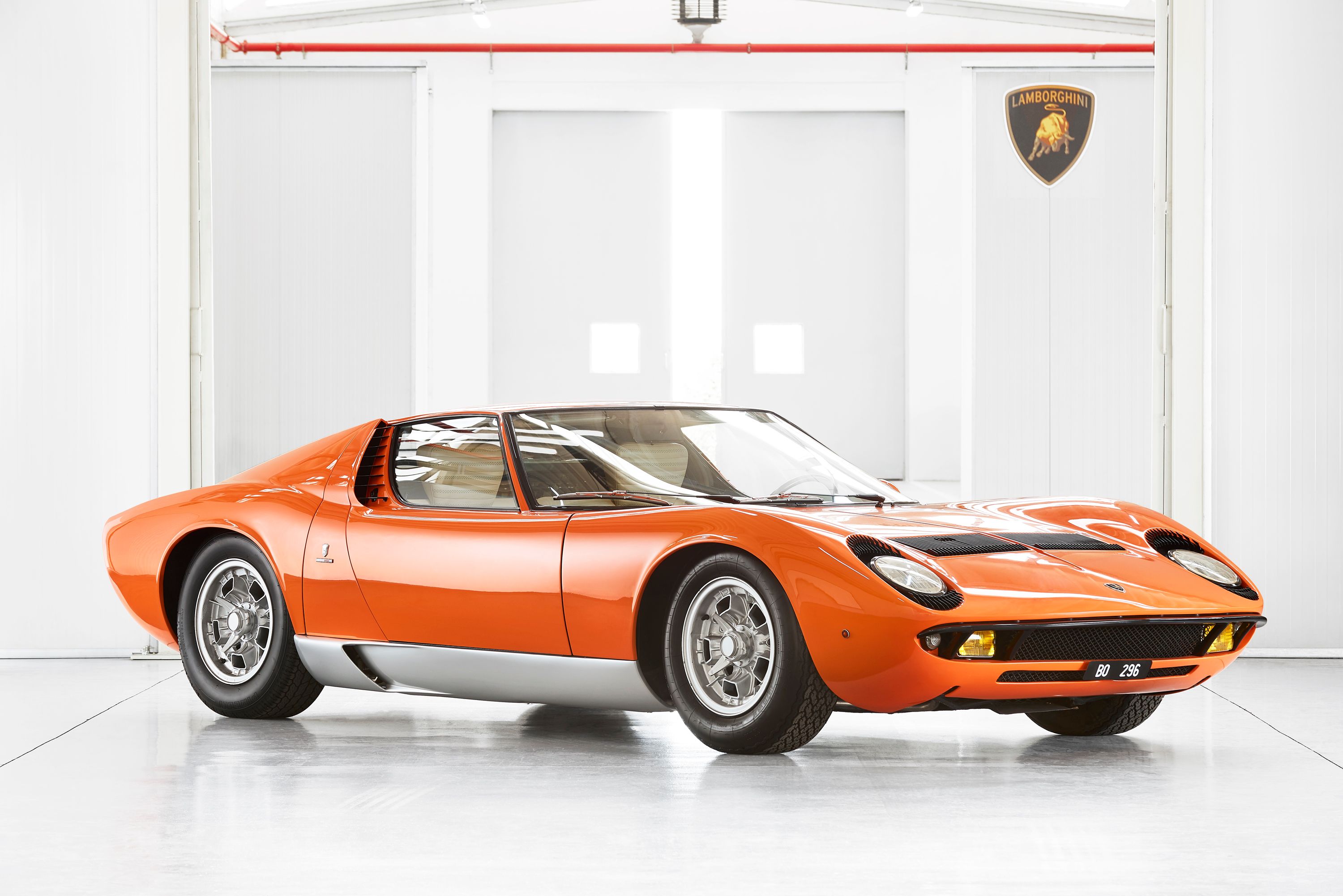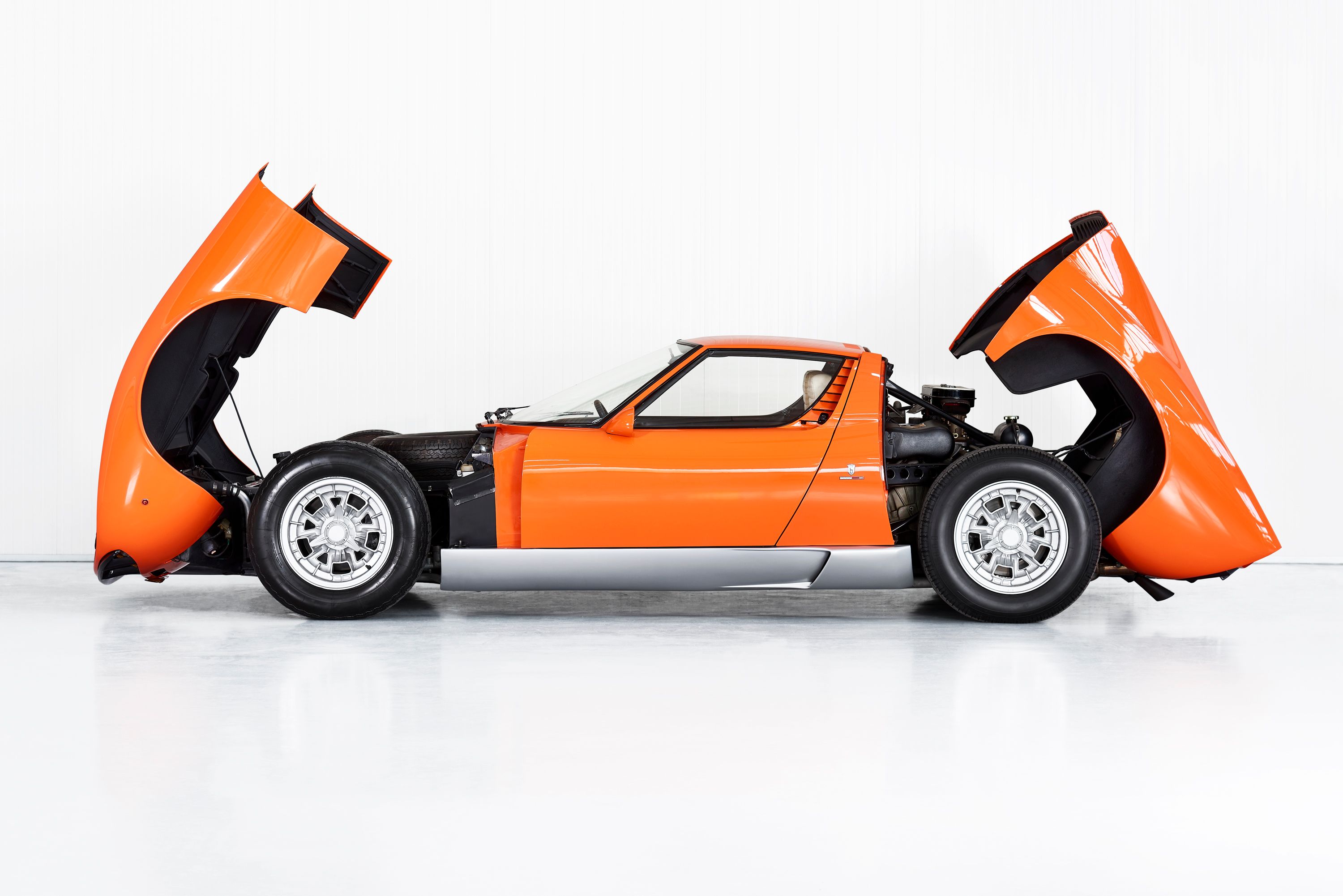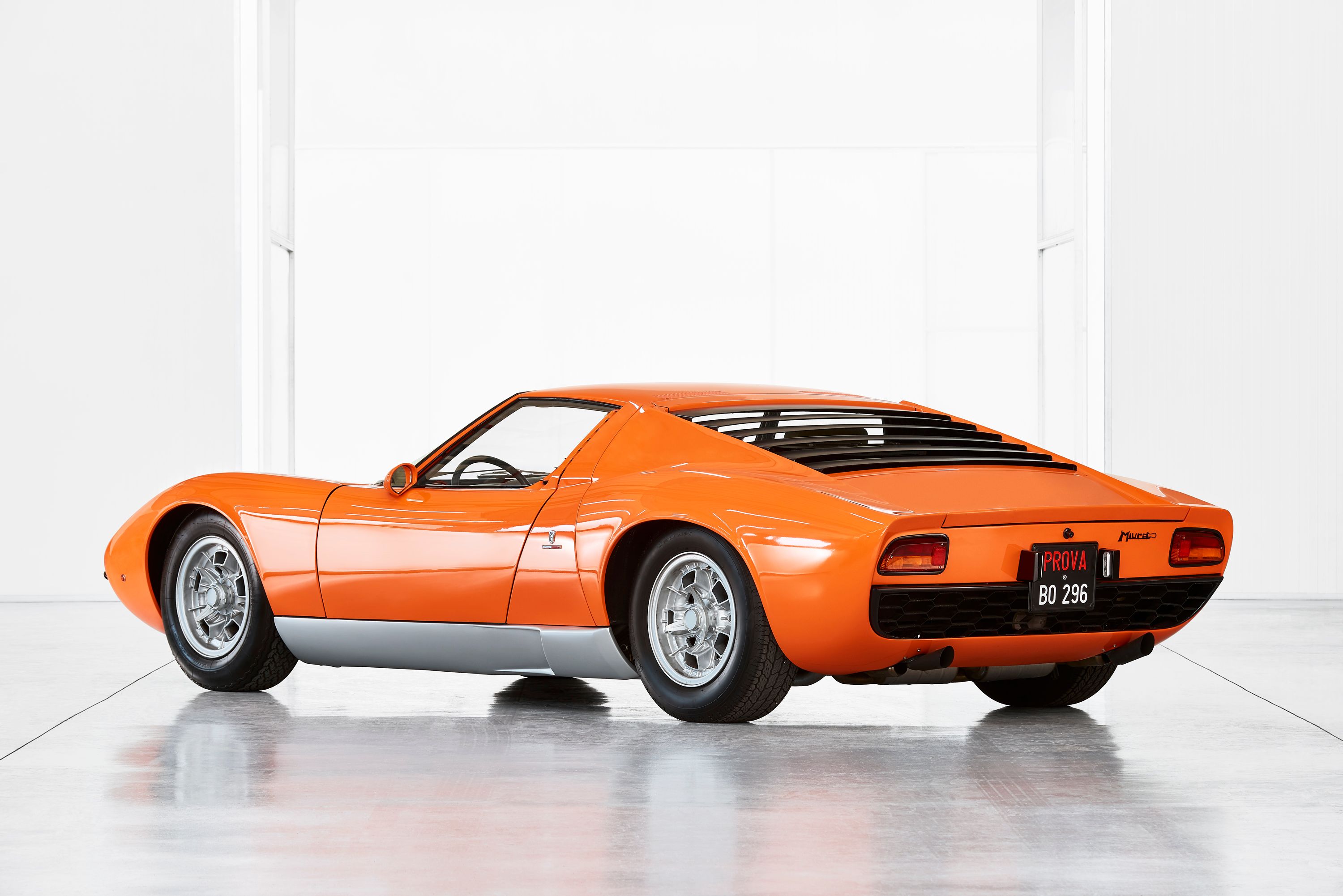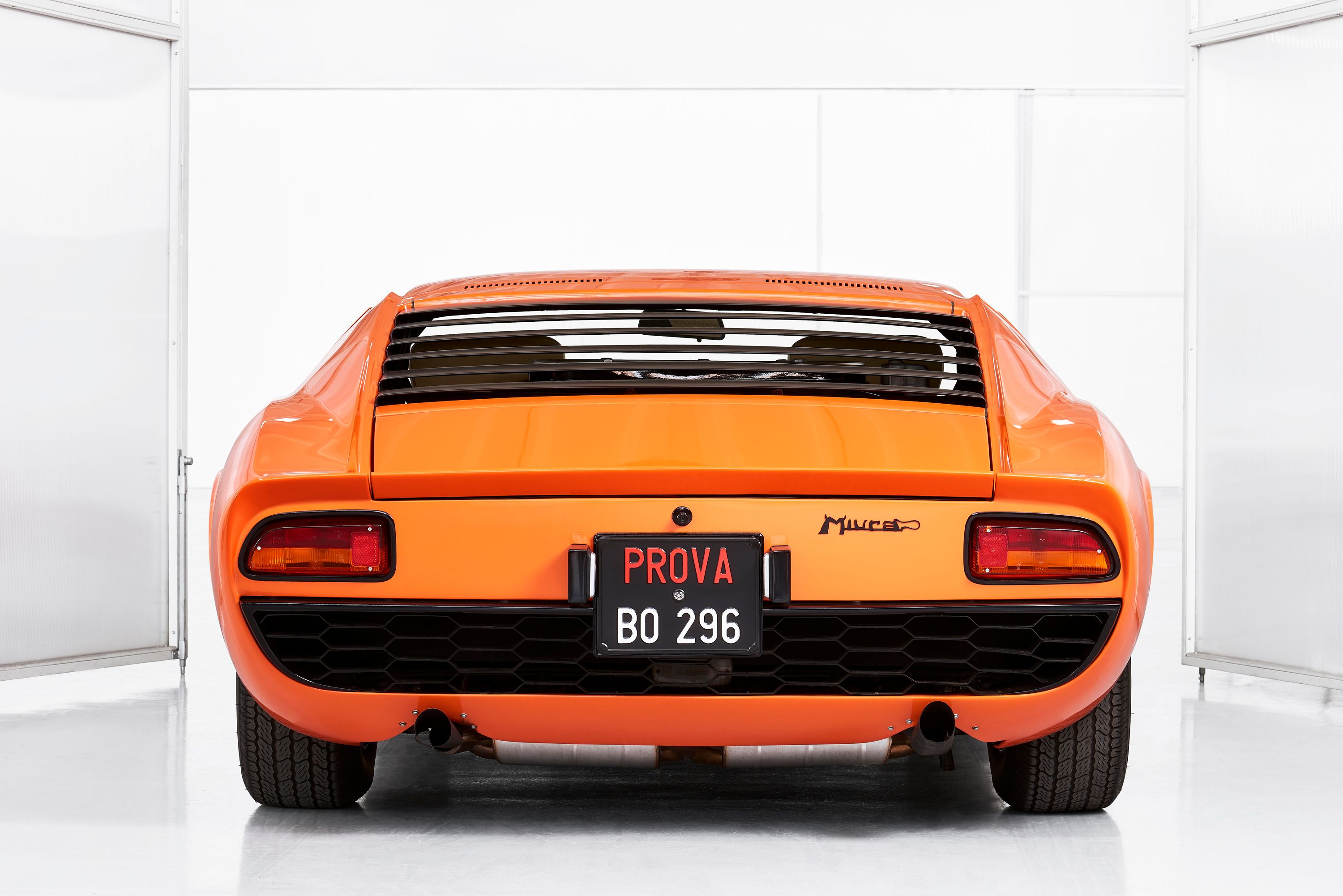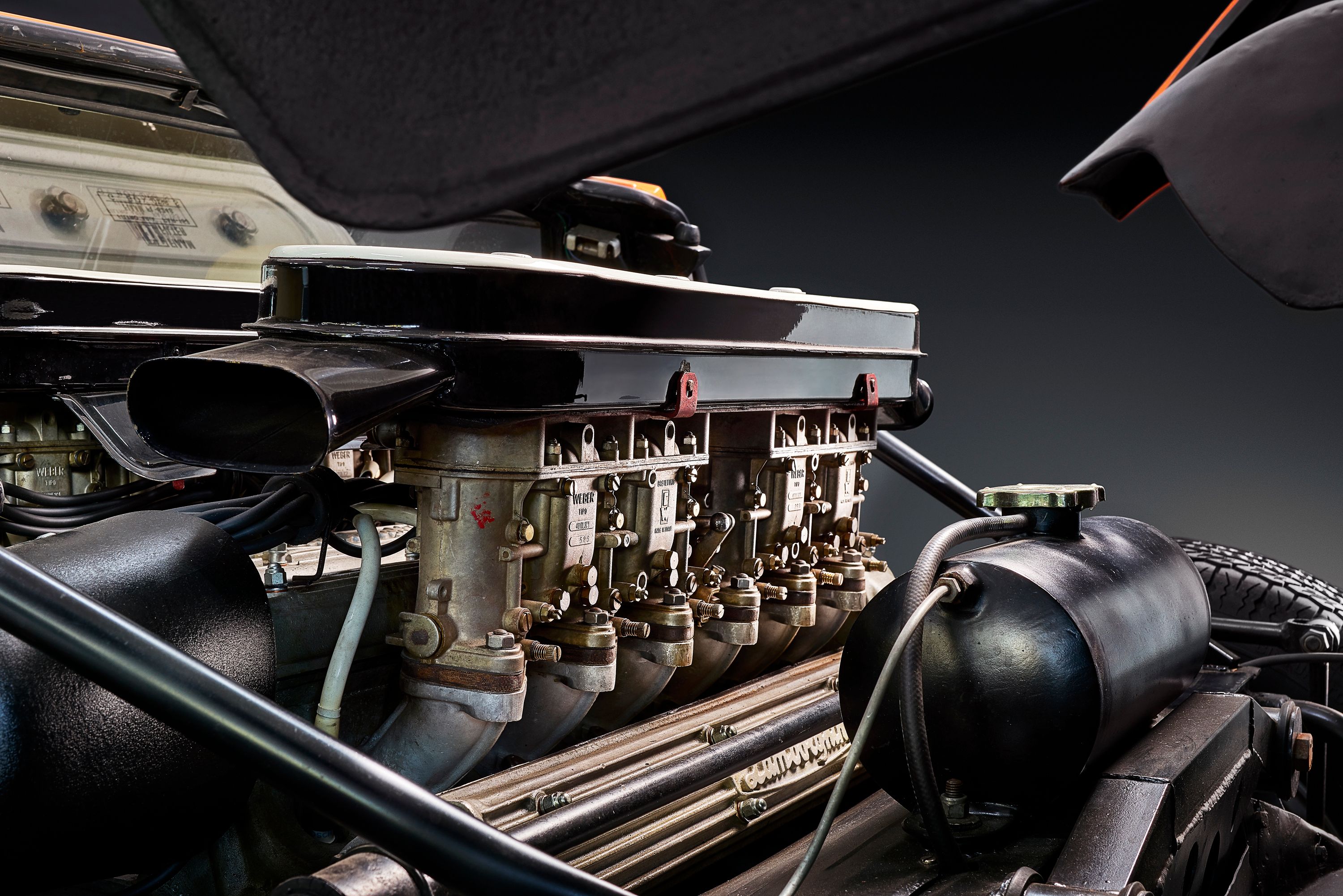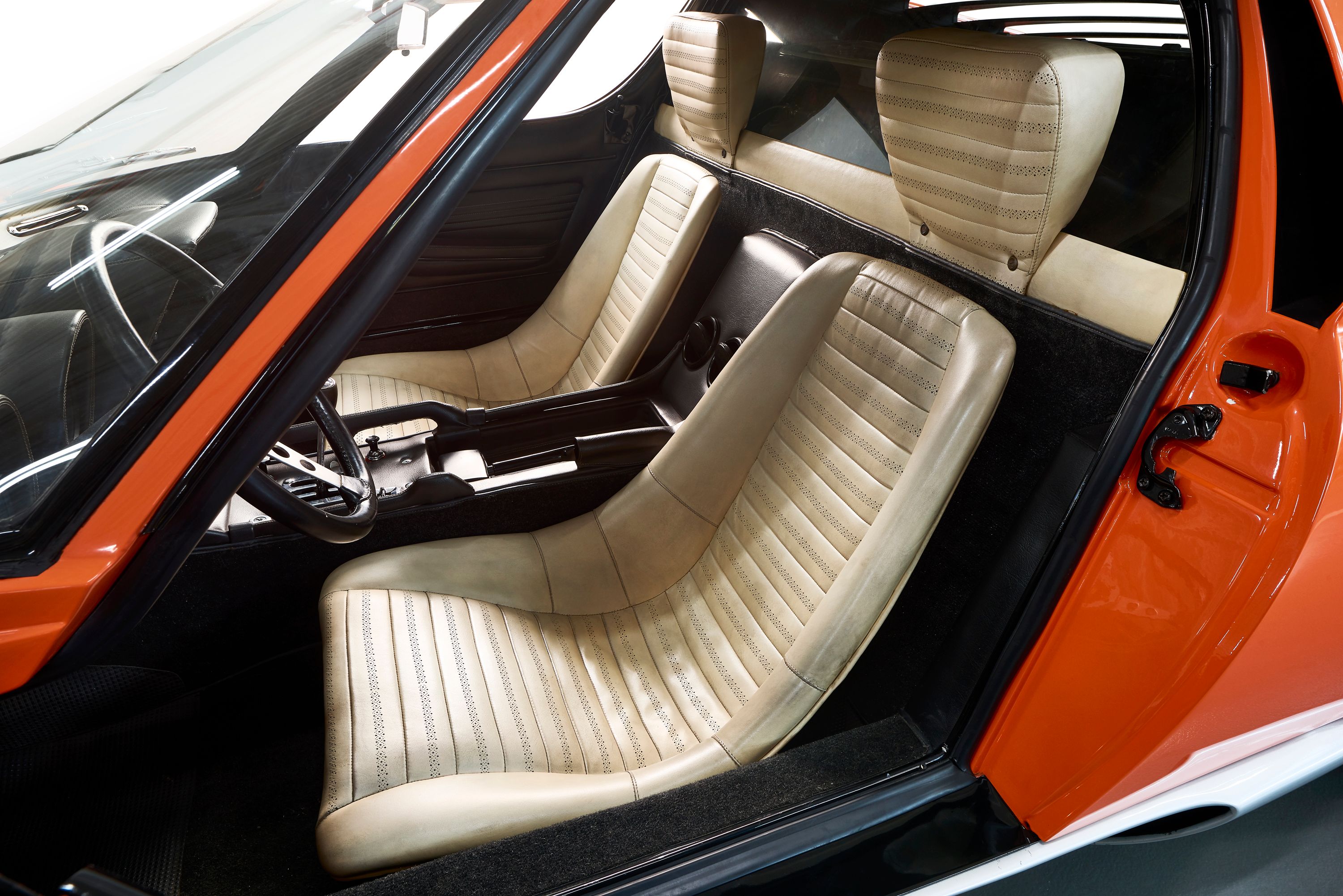Many generations of car guys watched in disbelief as the orange Miura that shows up to drop jaws as it drives down one of Italy's many strips of winding road in the opening minutes of the classic 1969 movie 'The Italian Job' never exits that tunnel in one piece. The good news is that the car we see traversing the Grand Saint Bernard Pass survived the filming and here's what's even better: the car that was considered to be the one used during filming was certified by Lamborghini as being genuine and then was restored by the Italian company's Polo Storico department that specializes in nut-and-bolt restorations.
Can a car roar its way into the folklore of motion pictures after appearing on screen for a grand total of four minutes? If that car is Lamborghini's first mid-engined car, the Miura, then the answer is yes. Granted, it helps that the said movie isn't some C-rated afterthought of a movie that barely made its way on home video but a masterpiece starring Michael Caine and a trifecta of Minis that were so iconic they got a reboot by the time the BMW-engineered Mini Cooper was launched in the early noughties.
But the Miura remains the unsung four-wheeled hero of that movie and, now, that very P400, chassis #3586, is shiny and its leather sparkling. Having said that, everything is else is as it' should be: the driving position is still unpleasant, and the bulky center console with those six Jaeger dials looks notoriously out of place. Did they forget about it and just added the whole thing at once before sending the first finished car to the Geneva Auto Show in 1966? Does it matter? Well, not really. You tend to not question cult classics.
It's fair to assume this 1968 Lamborghini Miura is worth its weight in gold
IMDB.com describes it as a "comic caper movie about a plan to steal a gold shipment from the streets of Turin by creating a traffic jam." Doesn't that sound daft? Well, if that was the description of a book written on its back cover then it would fit nicely in line to confirm the age-old proverb: "never judge a book by its cover."
To the dismay of car fans everywhere, the car you see rolling down that hillside is a genuine Miura, but it's one that was destined to meet its maker by then anyway. Happily, though, the running and driving example that was used is around but, for years, the authenticity of the car thought to be the one used during filming was doubted. That is until now when Lamborghini officially ended the debate by acknowledging that chassis #3586 is the car used in the movie. What did Lamborghini do next? Proceed and restore it from bumper to bumper, obviously.
But the story of the car is much more interesting than that because the car was thought to be lost for decades. One popped up for sale in the U.K. in 2015, and the sellers said it's the real deal, but Lamborghini couldn't verify it. So let's remind ourselves how the story unfolded to better understand why this P400 is a bit like the Italian equivalent of the surviving Ford Mustang GT 390 Fastback used in the 1968 movie 'Bullitt' starring Steve McQueen & Co.
The first version of the Miura, known as the P400 (due to the position of the engine and its 4.0-liter capacity, if your round it up) was motivated by just 275 horsepower, cost $20,000 in 1966 (or almost $160,000 in today's money) and some 275 were sold until 1969 when it got replaced. By Lamborghini's standards, this was deemed to be a resounding success especially at a time when a Jaguar E-Type cost somewhere in the region of $5,800. On top of that, Lamborghini received tons of publicity after stars like Frank Sinatra purchased one.
For the shooting of the scenes, the odometer was disconnected as Lamborghini planned to sell the car after filming which it did, the car finding its way on the lot of Italian dealer Zani by July 2nd, 1969. According to an Octane story that tried to determine back in 2015 if the car for sale in the U.K. through Iain Tyrell's Cheshire Classic Cars really is that Miura, "exactly went on during the few days spent filming the opening scenes of The Italian Job has never been clear." What is clear is that the car that was sent tumbling down and into a small stream of water below was a Miura that ended up at the factory after a wreck in the Middle East.
What's interesting is that, after the scene was shot, "special effects man Ken Morris was tasked with retrieving it from the bottom of the river gorge, but recalled later: ‘I went to rescue it, as you always have to get these vehicles back… but I couldn’t find it! It had disappeared by the next day. I went down there many times as, after all, it was only a small river. So somebody must have seen us throw this Lamborghini down, and retrieved it during the night.’"
The French collector's unfiltered reaction is what got Boutin thinking. "We started to watch the opening scenes of the movie, again and again, image by image, zooming in on every possible detail. This is how we first realized that what had started as a kind of joke might actually have some basis in fact. By comparing the stitching and hole patterns in the headrest and dashboard, we realized that #3586 and The Italian Job Miura had the very same headrest and dashboard, with the same faults in the same places." How is that relevant? Well, the leather upholstery was sawn by hand as you'd expect, so no two cars had perfectly identical stitching and holes.
But, at the time, nobody could certify the car's authenticity and many Italian automotive historians were skeptical. Two years later, the car was for sale again in Cheshire, and Iain Tyrell advertised it as the car from the movie.
Lamborghini finally went through the exhaustive procedure last year when The Kaiser Collection of Vaduz, in Liechtenstein, reached out to Polo Storico to check up on its history once and for all. Testimonies from surviving members of the film crew, test driver Enzo Moruzzi, as well as all of the existing data from back in the day were corroborated to attest that, indeed, this is the Miura used in the film. You can say it's bang on time since the movie is celebrating its 50th anniversary this year.
I bet you're now wondering how much it would cost should it pop up on the auction block now that we know it's the real deal? Well, for what it's worth, the car isn't 100% original: the original engine cracked and was replaced with the last brand-new SV unit produced by Lamborghini in the early '70s, and the paint job was redone in the 21st century but I'd reckon it would fetch much more than the $3.38 million Joe Macari in the U.K. is asking for a grey 1972 Miura SV.
So you and I will probably never lay eyes on this car which means there's only one thing left to do: get comfortable on the sofa, roll the film, and relax listening to Matt Monro's 'On Days Like These' accompanied by the Miura's own symphony, one that would take you in its prime all the way to 170 mph - not on the Saint Bernard Pass, though.
Further reading
Read our full review on the 1971 Lamborghini Miura SVJ
Lamborghini Polo Storico restores the iconic Miura SVR
Miura Has Fun On Its 50th Birthday on Winding Italian Roads
Read our full review on the 1966 - 1969 Lamborghini Miura.
Read our full review on the 1971 - 1972 Lamborghini Miura SV.

